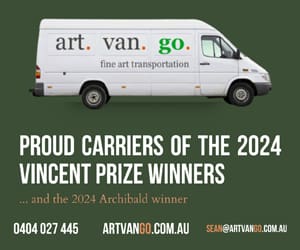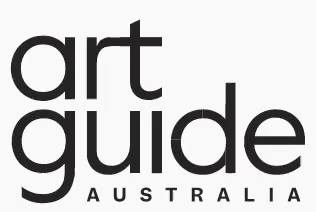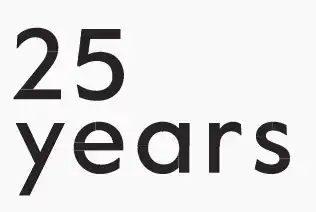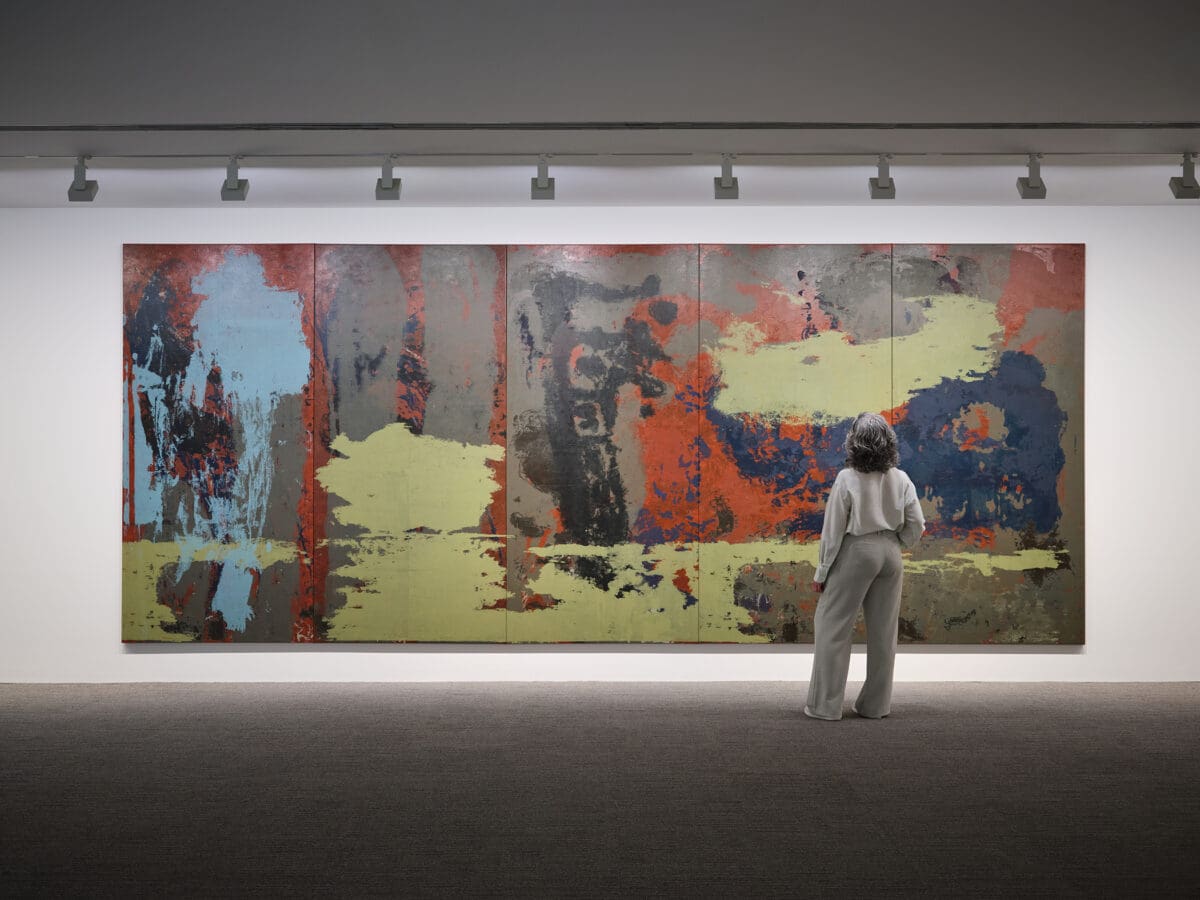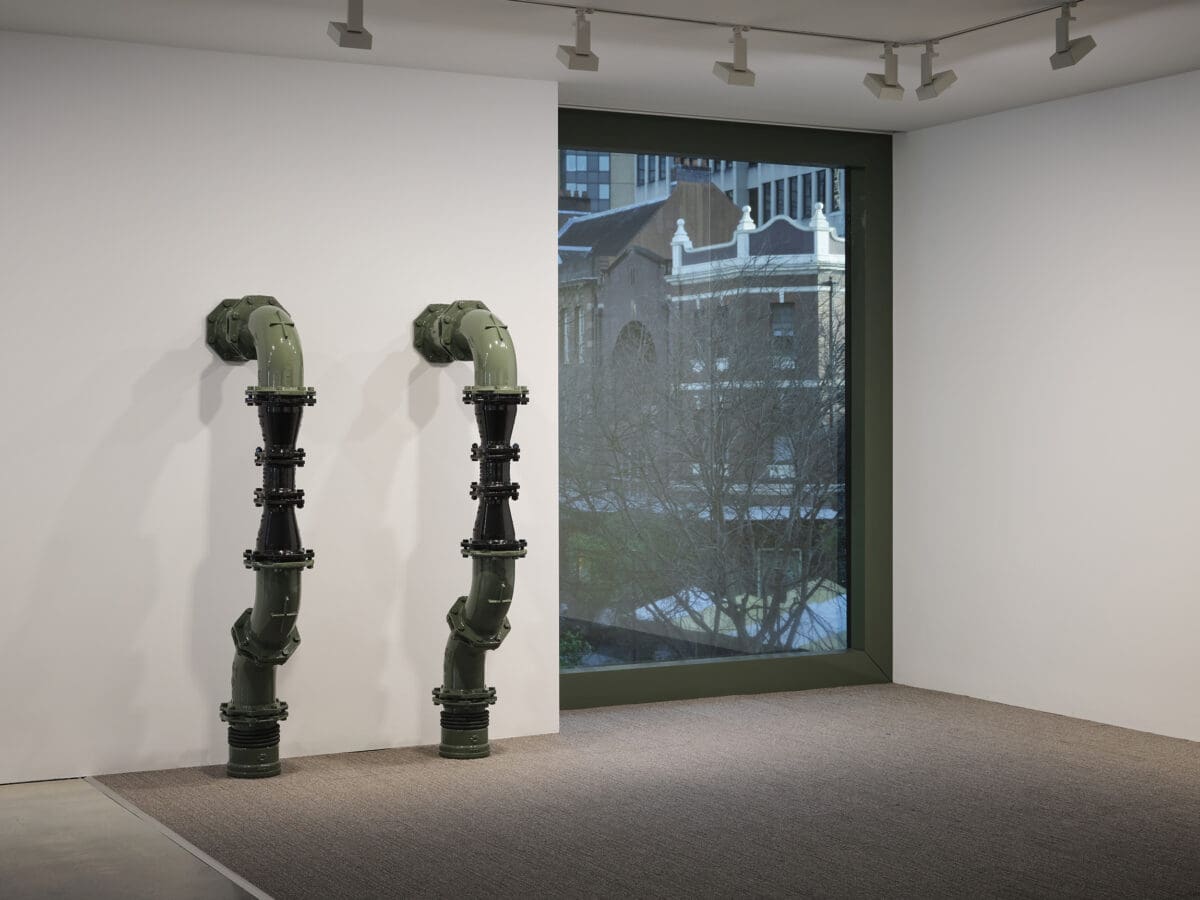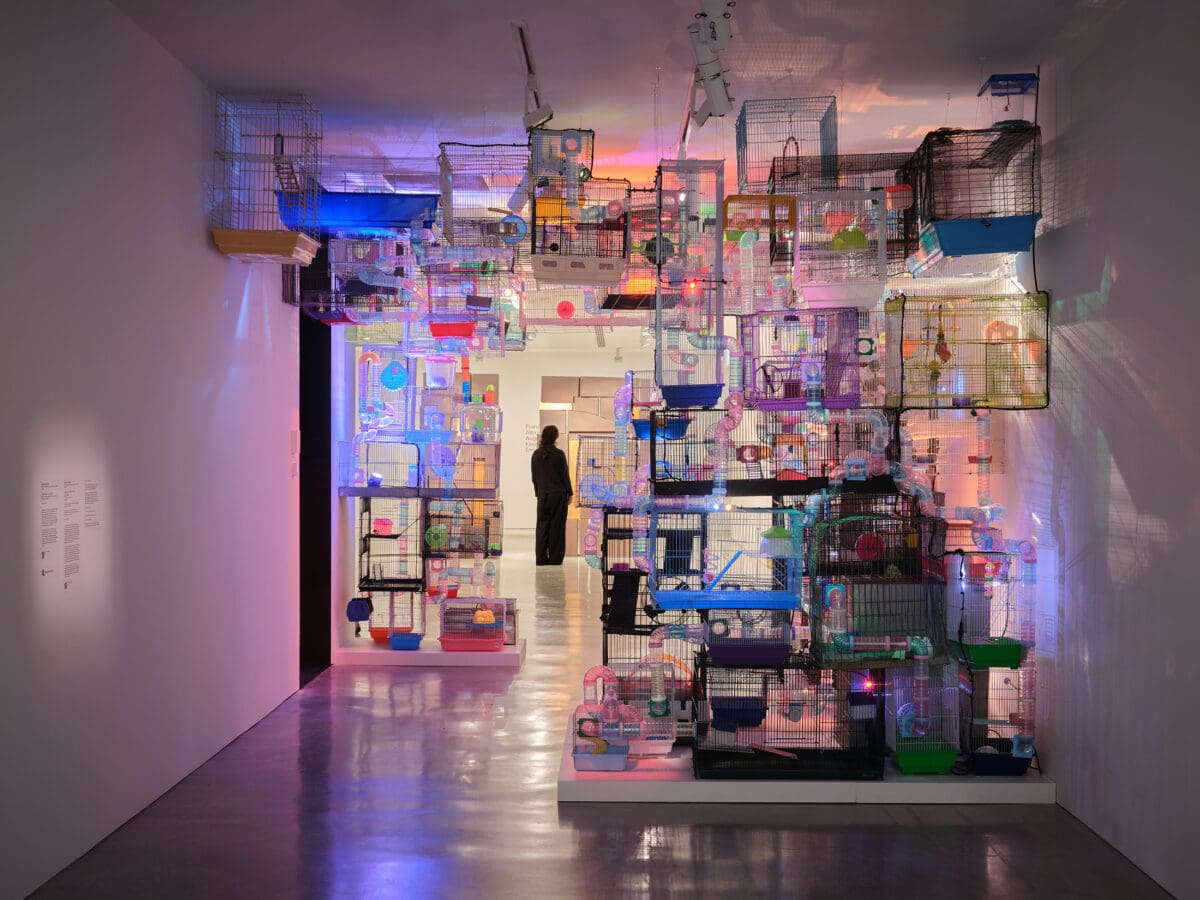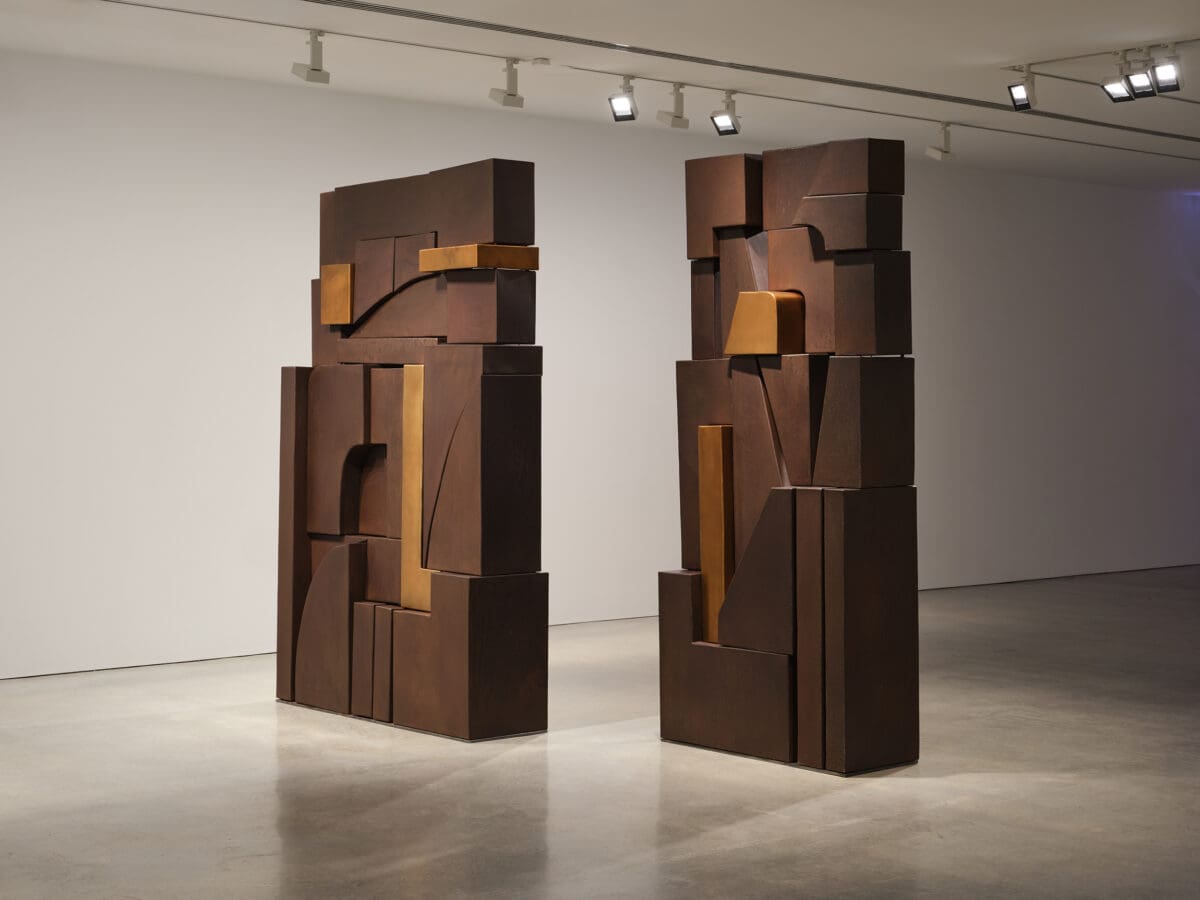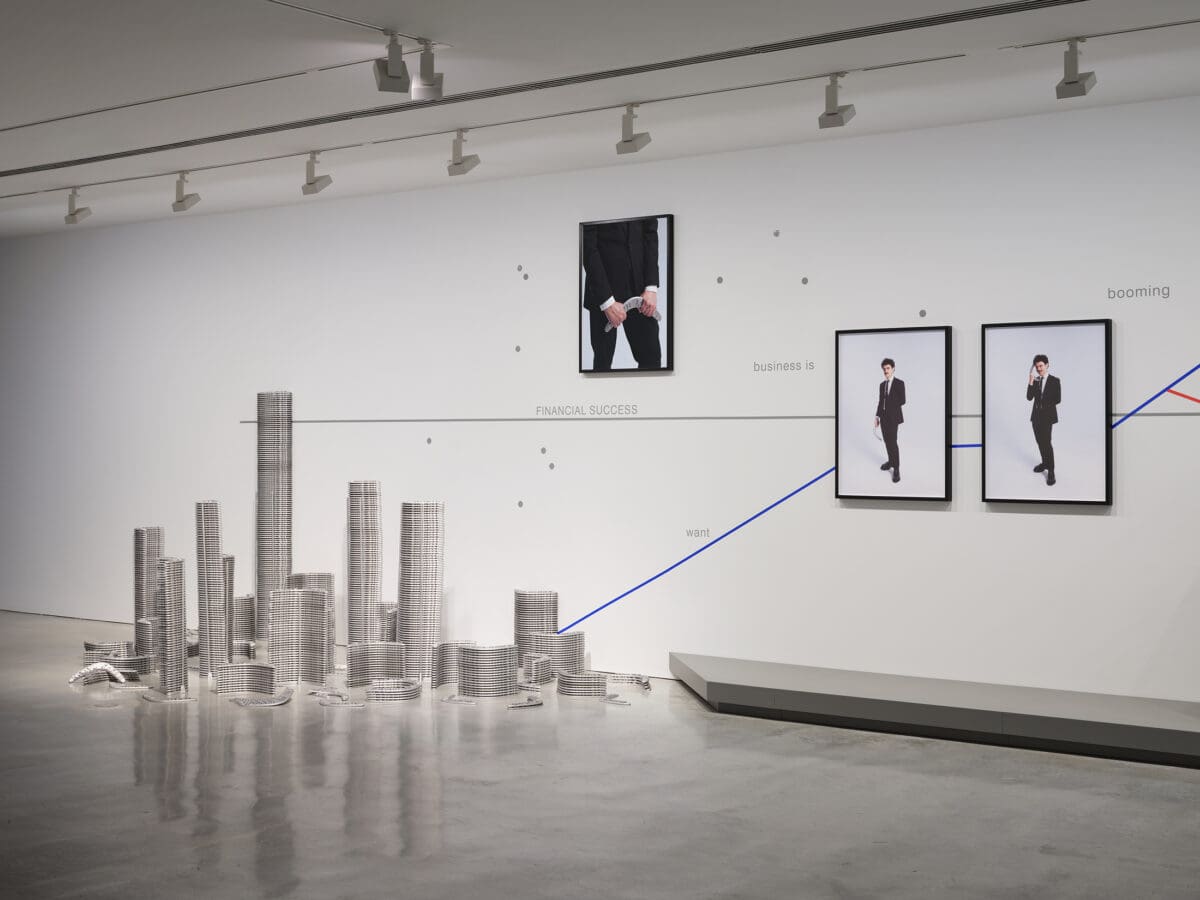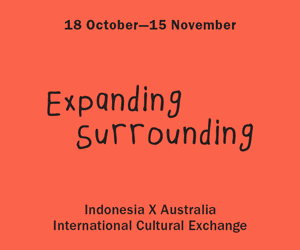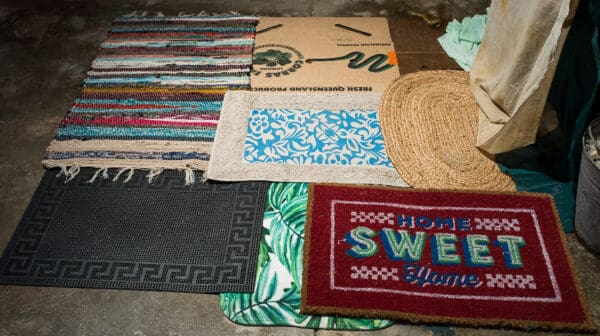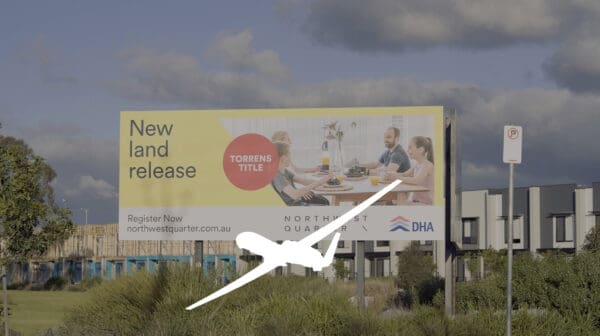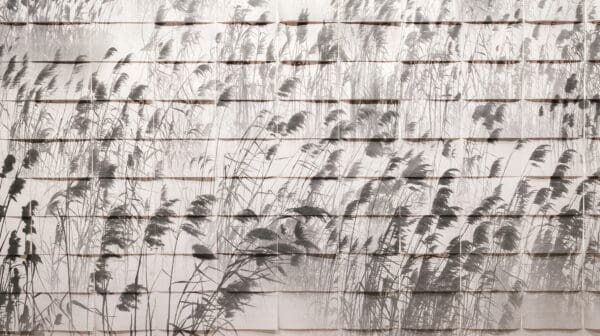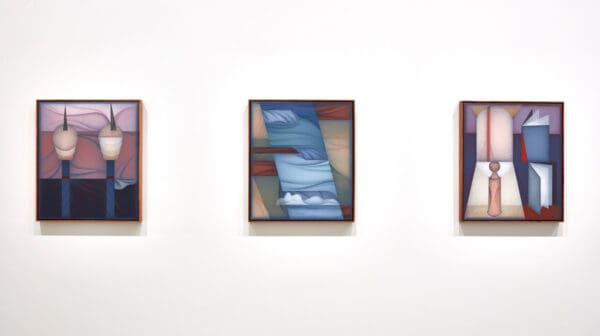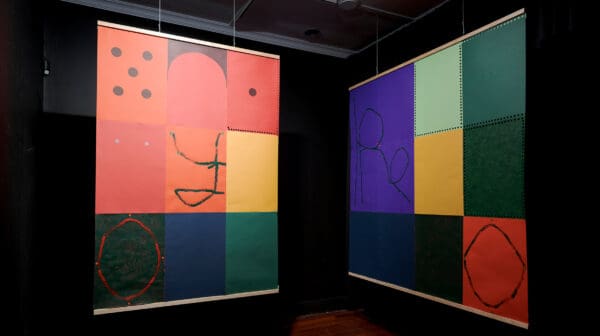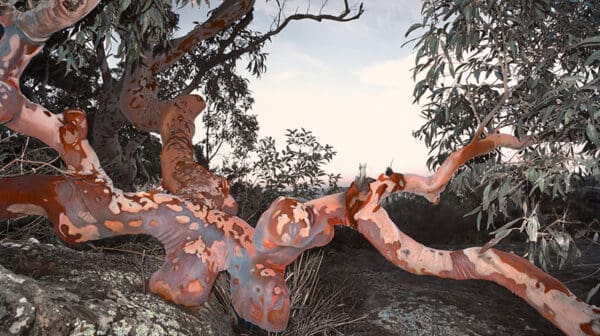In its 34th year, Primavera—the Museum of Contemporary Art Australia (MCA)’s annual survey of Australian artists 35 and under—might be about to age out of itself, but with age it seems, comes wisdom and perspective. At a moment of broader cultural and institutional crises, global political reckonings, terrifying technological innovation and general exhaustion, curator Tim Riley Walsh has brought together five artists whose conceptual and material curiosities have a lot to say about where we might go from here.
In researching the exhibition and over the course of nearly 50 studio visits across the country, Riley Walsh found himself increasingly interested in the idea of ‘industrialised abstraction’ and how artists working particularly in sculpture and installation were playing with materials in different ways. “The other thing that came out of these conversations was between these two poles of analogue and digital processes and what it means to be an artist when you have access to tools such as modelling and printing… this tension between the hand of the artist and automation and digital processes,” he reflects.
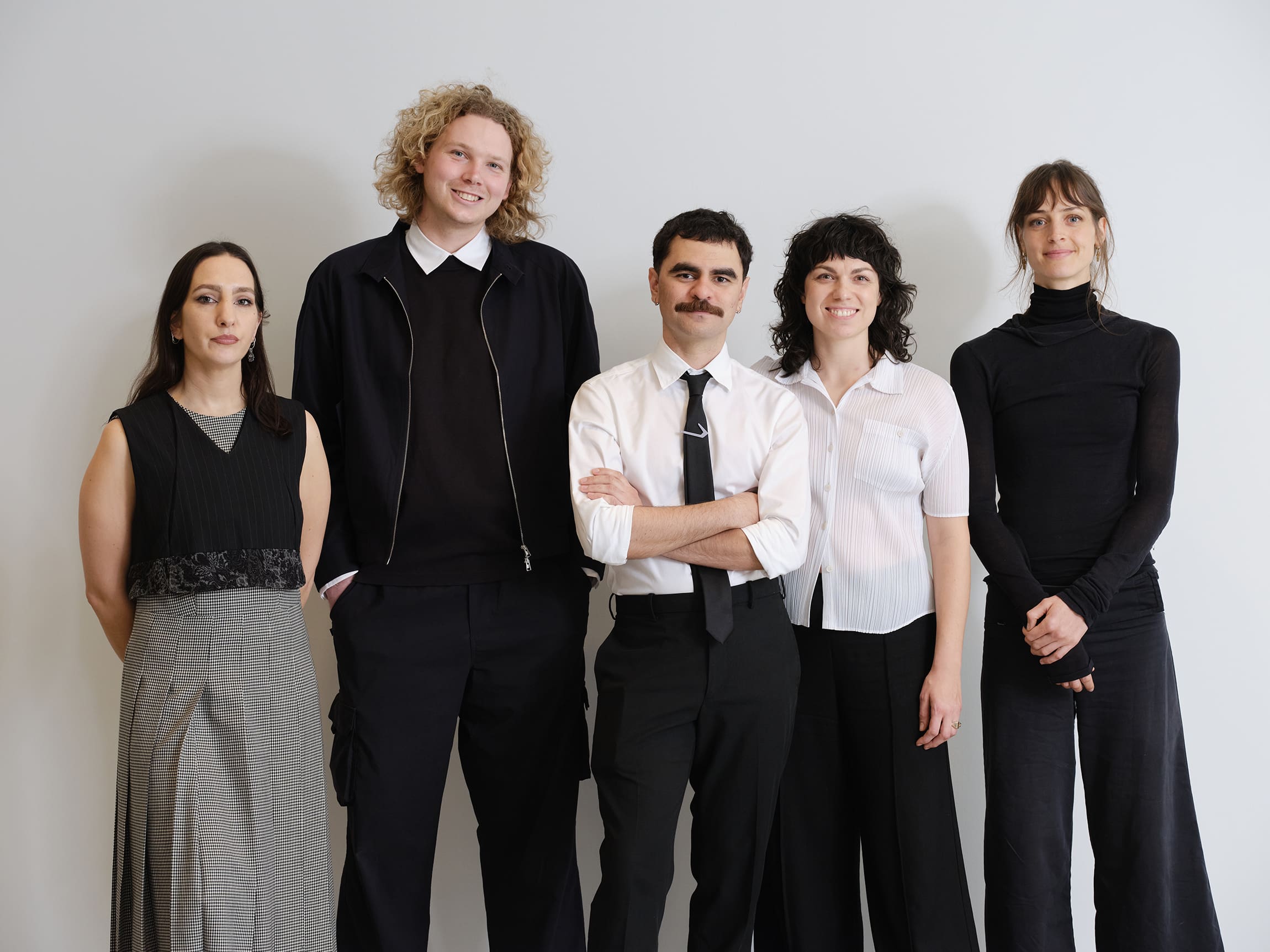
Moving through exhibition spaces that Riley Walsh has conceived as ‘the factory’, ‘the mine’ and ‘the corporation’, works by Francis Carmody, Augusta Vinall Richardson, Emmaline Zanelli, Keemon Williams and Alexandra Peters engage with ideas including repetition and serialisation, material finishes, the human and planetary costs of extraction, commodification and the artist as machine and industry.
For Melbourne/Naarm-based Carmody, the works he’s made for Primavera continue a line of inquiry from recent exhibitions, including at Gertrude Contemporary in Melbourne, that take a speculative, storytelling approach to Western scientific understandings of the world and our place in these narratives.
“3D modelling has become a really important process to realising these speculative works because models, whether they be financial or meteorological, are always failing and innately iterative. So a 3D model feels as good a medium as any to try and give potential form to these things you can’t quite grasp at,” he explains. “I suppose the reason I make art is that I’m curious about where are we and what is going on, in the deepest philosophical sense. And why am I here? Why am I hungry? Practice has become this amazing way to learn about the world.”
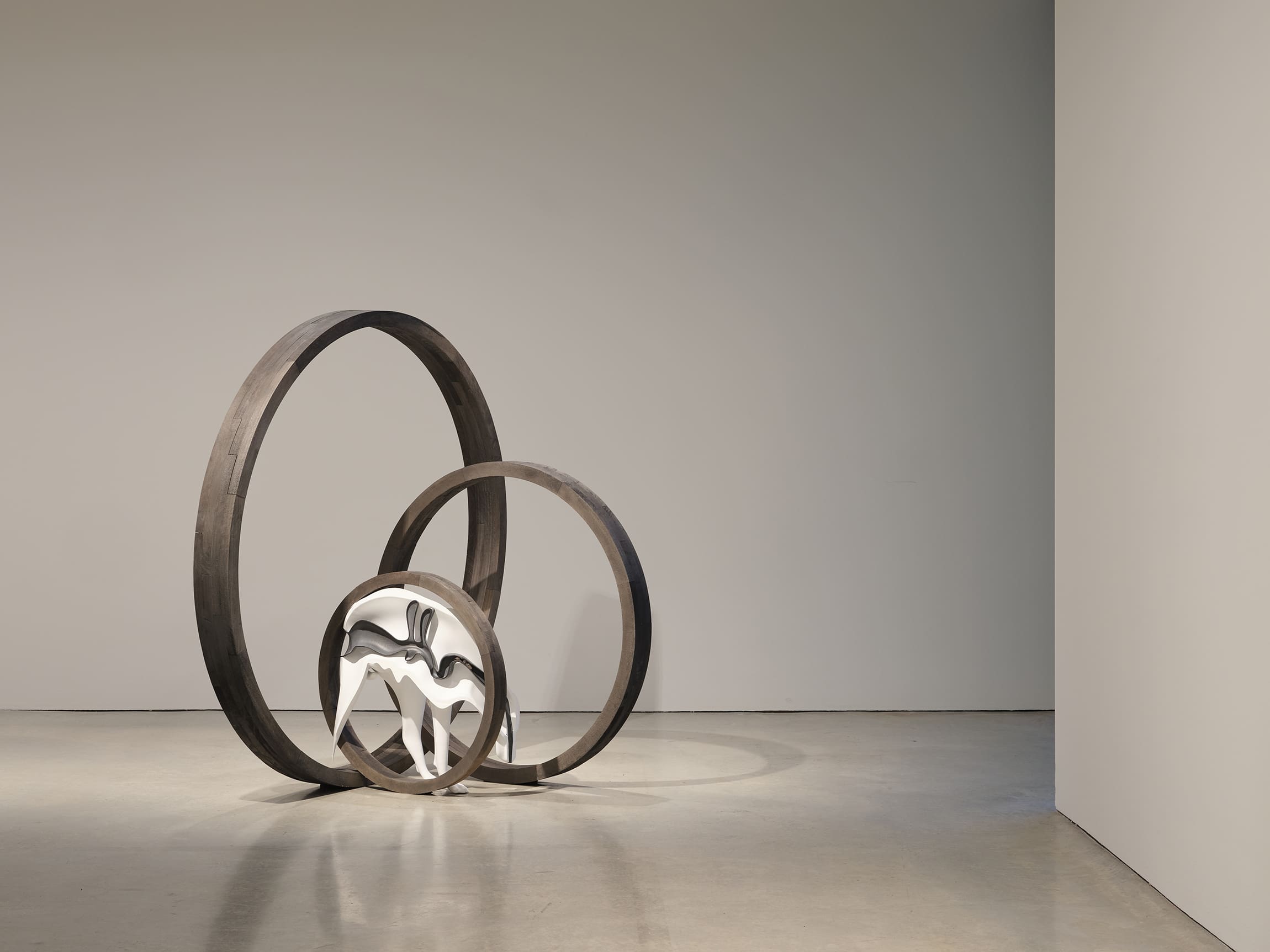
A lot of this learning also comes from collaborating with glassblowers, blacksmiths, industrial thermal sprayers, architects and others—this blurring and complexity of production and abstracted material finishes adding another literal layer to the work’s narrative possibilities.
Sculpturally, Canine Trap I and Canine Trap II (both 2025) elicit quietly discomforting scenes of pharmaceutical labs, internal organs and canine forms caught in strange circular traps—ideas of appetite, trapping, digestion, fear and hunger—rendered through strange forms and gorgeous surfaces that have been variously welded, painted and treated with zinc thermal sprays, glass blasting processes and salt crusted finishes. It’s a complex process that Carmody sees mirrored in the production of the exhibition, from curatorial and installation to marketing and invigilation.
“The production of the work is as networked and distributed as the presentation of art is today… The world is only going to get more interconnected and more complex and I think that as the practice is growing, you want something that fits and thrives in that interconnectedness and in that complexity.”
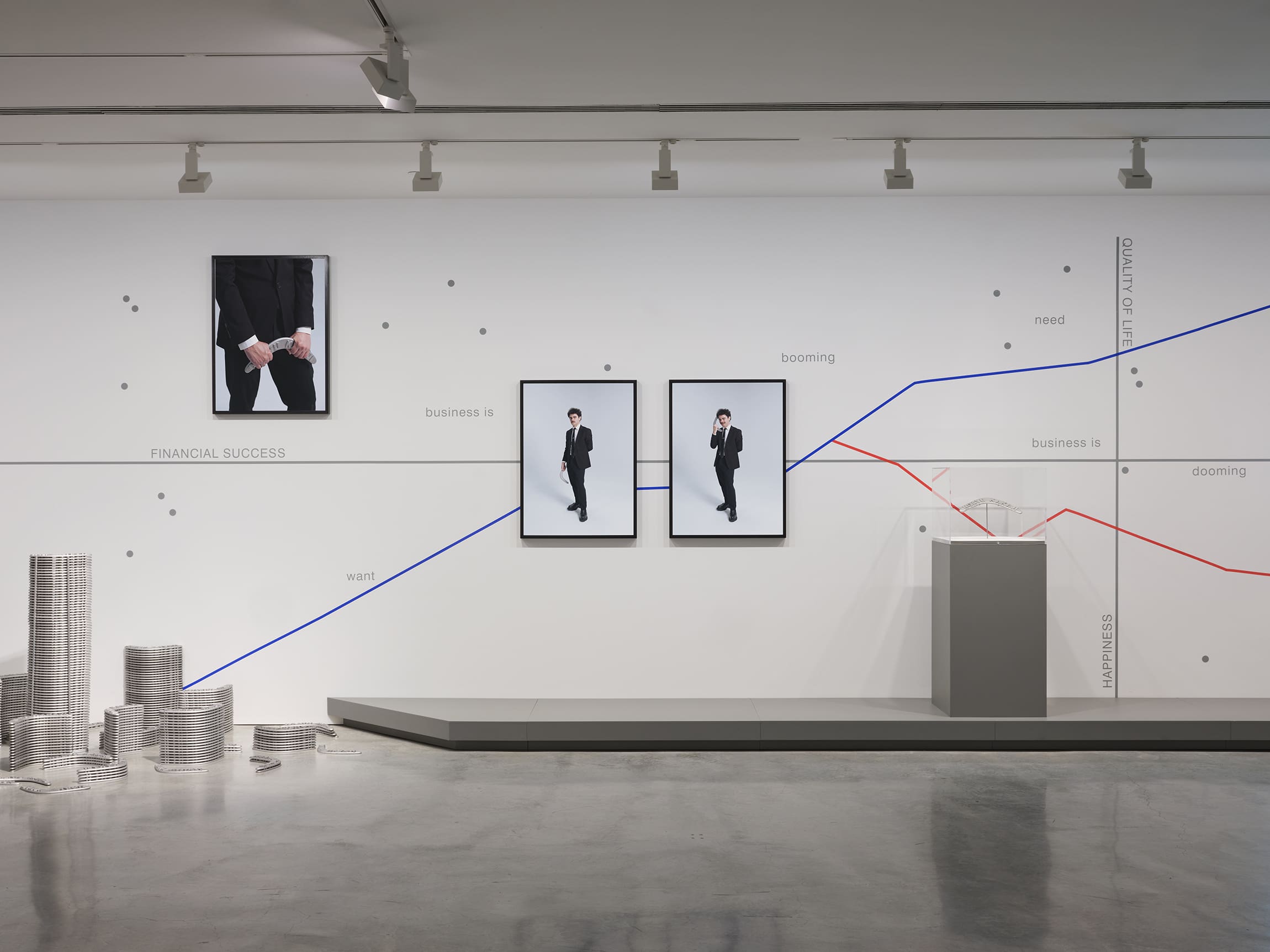
For the Brisbane/Magandjin-based Williams, a Kuku Yalanji, Koa, Meriam and South Sea Islander artist and curator, Primavera was an opportunity to engage directly with the implications of production and expectation that the industry demands of artists. Williams had come to attention with his handmade, bespoke ceramic boomerangs and was grappling with their critical and popular demand when the invitation from Riley Walsh to be part of Primavera arrived.
“I didn’t want to make boomerangs and I wrote this very spirited three-page letter [to that effect] and so it turned into, well, let’s work together and try to put the nail in the coffin, metaphorically and physically, for that body of work.”
In the resulting two-part sculptural installation and text and video-based wall works, Business is Booming and Business is Dooming (both 2025), Williams oversaturates the market with a 400kg mound of mass produced and imported aluminium boomerangs in what he describes as “a disembodied portrait of all that weight and labour that isn’t seen.”
From here, photographic portraits and graphs track Williams’ reckoning with ideas of trajectory and productivity and his resistance to expectations and definitions of success outside his own. “Then you end up in the third act, which is the antithesis of a climax. It goes out with a whimper. It’s just a seven-minute video of me sleeping,” explains Williams.
“If we’re talking about industrialised abstraction, part of it is the cognitive dissonance [that occurs] when you enter the industry as an artist—you are the thing that becomes abstracted. You lose sight of what the industry wants you to do versus what you want out of the industry.”
Introducing a new and more efficient means of (mass) production in the making of Business is Booming was a means to reclaim control and reframe some of the ways artistic production is talked about and valued, literally or otherwise, because as Williams experiences it, artists don’t exist within the industry—they are the industry. “We have to be the ones to talk about what’s happening… who is really sacrificing most in these exchanges, because it’s never an equal exchange.”
The significance of Primavera isn’t lost on either Carmody or Williams but having arrived here, Williams in particular sees it an opportunity to reset some boundaries and in fact retire for a year or two.
“Primavera is a big milestone but there isn’t any meaning in that for me if I’m not allowing life to catch up to the practice… We’ve got from point A to point B and there are now boundaries and bare minimums for the next project—funding, assistance—otherwise I’m going backwards. So it’s become a personal value thing, not of exponential growth but of exponential capacity.”
Primavera 2025: Young Australian Artists
Museum of Contemporary Art
5 September 2025 – 8 March 2026

